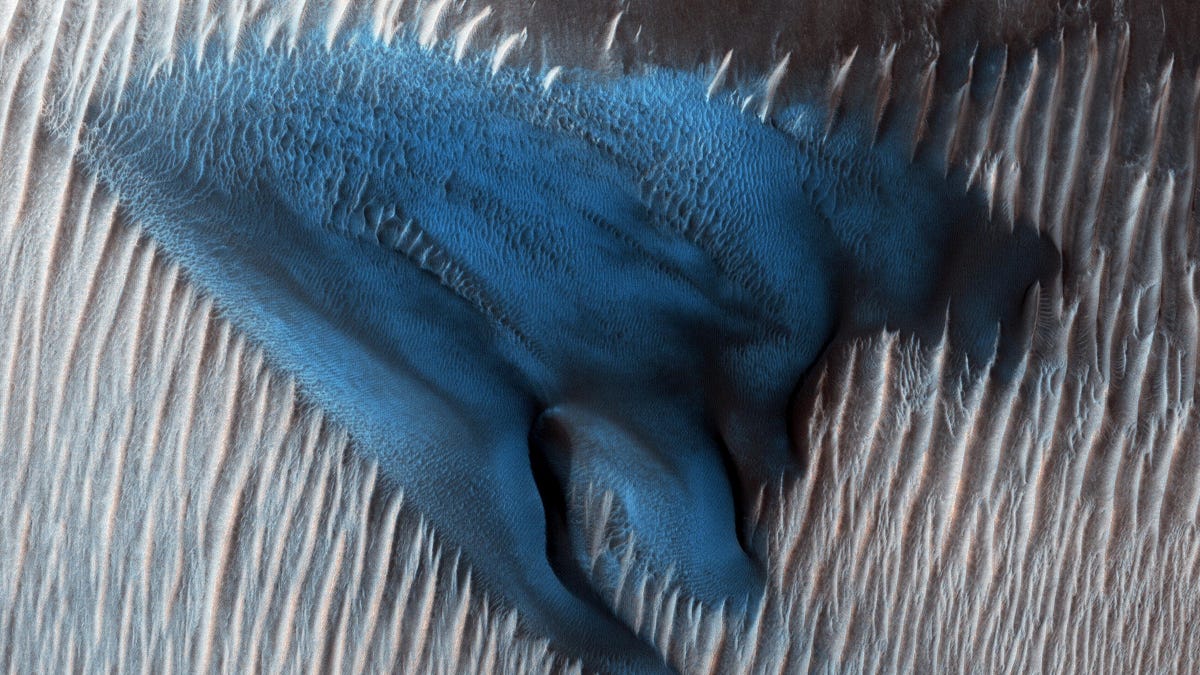NASA Mars Reconnaissance Orbiter snaps fetching 'blue dune' image
One of these dunes is not like the others.
Mars earned its "Red Planet" nickname for good reason, so why does this particular Mars image have the blues? The azure dune seen here gets its startling shade from enhanced color, a way of manipulating images to better show surface features.
The image comes from NASA's Mars Reconnaissance Orbiter and offers a closer look at a field of sand dunes that's accumulated on the floor of the Lyot Crater. The large "blue" dune "is made of finer material and/or has a different composition than the surrounding," NASA says.
The enhanced-color approach has been used to great effect on Juno images of Jupiter to help us better see the gas giant's swirling cloud formations.
Mars is home to quite a few scenic, wind-sculpted sand dunes. The blue dune snapshot comes from the MRO's HiRise camera, which has delivered some mind-blowing views of the Martian surface, including a Pac-Man-like crater.
Mars is in no danger of becoming known as the "Blue Planet." Earth and Neptune still own that color when it comes to this solar system.


